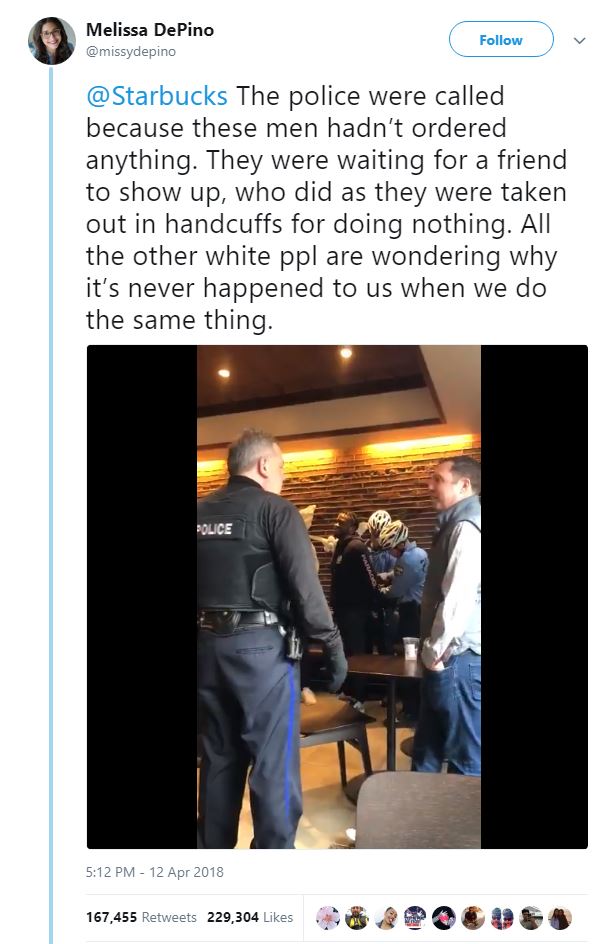Starbucks is in a PR crisis. In Philadelphia, a store employee had two young black men arrested who apparently were guilty of nothing more than waiting for a third friend to join them before ordering. (He showed up while they were being arrested in handcuffs.) She told 911, “I have two gentlemen in my cafe who are refusing to make a purchase or leave.” A too-old phrase in the black community for young men being hassled by police while doing nothing more than walking through a white neighborhood is that their crime is “Walking while black”; this Starbucks case is being described as “Waiting while black”.

It quickly became more than a local story – the above video shot by another patron has been viewed over 10 million times — and the Starbucks CEO has met with the two men, been commenting and apologizing. The last four tweets to their 11.9 million Twitter followers, over four days, are all about this incident.
Yesterday Starbucks announced that on the afternoon of May 29 they will close all 8,000 U.S. company-owned stores “to conduct racial-bias training to address implicit bias & prevent discrimination” for over 175,000 employees. The training curriculum will be designed by some big name “national and local experts”. They also made it clear, more than once in just the press release, that they aren’t the only company with an implicit bias problem, so they’ll make the training available to other companies. How nice.
Call me cynical, but if implicit bias could be solved in an afternoon, it wouldn’t exist anymore. Effective change, whether about bias, or learning to be a better public speaker, or a better manager, or anything else, typically requires practice, repetition, and incentives.
When I was in high school I was in debate. One year the topic was that every person should have to participate in national service. This was several years after the Kerner Commission released its report with its famous conclusion, “Our nation is moving toward two societies, one black, one white—separate and unequal.” Our coach came up with the excellent idea that we should base our case on that, and that the only way to reduce racial bias is through people of different races working together as equals. National service would provide that; he had experienced it when serving in the Army in Vietnam.
Since most Starbucks employees are from the local neighborhood, it’s likely that their shops in predominantly white neighborhoods will continue to have mostly- or all-white staffs and customers. A few weeks after the training, will the white employees in one of those stores respond differently to the rare site of a black person in the store?
Rather than this one afternoon of training, I’d like to know what Starbucks is changing in the long run in terms of hiring and training. If it’s not much, then this seems like mostly an expensive PR event.
